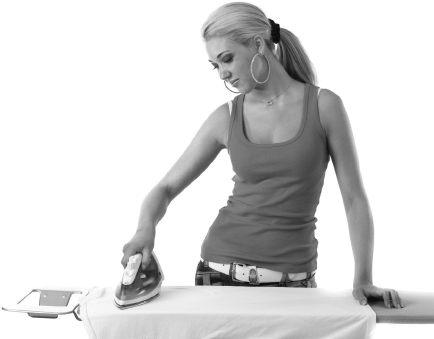
Alexander established not only the beginnings of a far reaching science of the apparently involuntary movements we call reflexes, but a technique of correction and self-control which forms a substantial addition to our very slender resources in personal education.
George Bernard Shaw
The Alexander Technique is simple to understand, yet it does take time to learn. Alexander said that even a child of three could learn it. In fact, children learn more quickly than most adults, because they have far fewer detrimental habits to lose. As described in chapter 2, Alexander’s problem with his voice was largely one of posture. He was holding himself in a rigid way, gripping the floor with his feet and pulling his head back with a great deal of force. Everything he tried to do to solve his problem did not work; it was only when he could see what he was doing wrong and was able to stop doing it that he made any progress. Alexander was a very practical man and he had little time for theories that were not tested in a practical way, and because of this his technique is very down-to-earth and can be easily comprehended by anyone willing to put in the time to learn it. The only requirement is that you approach it with an open mind, patience and a willingness to learn about your own unconscious habits.
When initially attempting to learn the Alexander Technique, many people get the wrong idea. This is because people often assume that there is a ‘correct’ posture; a correct way of walking, standing and sitting. Yet this is as far away from the Technique as you can get. Alexander once said:
Boiled down, it all comes to inhibiting a particular reaction to a given stimulus. But no one will see it that way. They will see it as getting in and out of a chair the right way. It is nothing of the kind. It is that a pupil decides what he will or will not consent to do.
It is important to understand that the Alexander Technique involves not so much learning as unlearning. It is a practical way of releasing the unnecessary and harmful muscular tension that you may have accumulated unconsciously over many years.
Many of the postural habits that we acquire in life are harmful to our health because they involve exerting excessive and unnecessary muscle tension in every action we do. Unfortunately, most of us are totally unaware of this tension, even though others can often see it clearly. Just watch a typical adult getting off the sofa and notice the great effort often involved in this very simple task. By gradually becoming aware and reducing the level of tension in your body, we will be able to achieve a better posture and a much more graceful way of moving. This relieves or prevents many common aches and pains, and allows unrestricted functioning of the respiratory, circulatory and digestive systems. Since the way we feel physically affects our mental and emotional outlook on life, releasing muscular tension also helps us to become calmer and generally happier in our day-to-day lives.
Many people think of the Alexander Technique as just another relaxation technique, but it is nothing of the kind. Although you will learn how to reduce the tension in some of the muscles that have become tense, other muscles may in fact have to increase in tone. It is a method that brings the entire muscular and reflex system back into balance. You will also learn new and easier ways of moving while performing everyday tasks, which will result in far less strain on you. You will discover ways of sitting, standing and walking that put less strain on the bones, joints and muscles, allowing your body to work more effectively and efficiently. In fact, many people who practise the Technique experience a general feeling of lightness throughout their bodies and have even described the sensation as like ‘walking on air’. One of my pupils described the feeling after an Alexander lesson as the ‘champagne feeling’, because she felt light and bubbly. Since our physical state directly affects our mental and emotional wellbeing, people often say that they feel much calmer and happier after even just a few Alexander lessons, often resulting in less domestic tension and a greater ability to cope with life in general.

5: Even simple activities such as ironing can cause stress on the whole body if the head is not balanced easily on top of the spine.
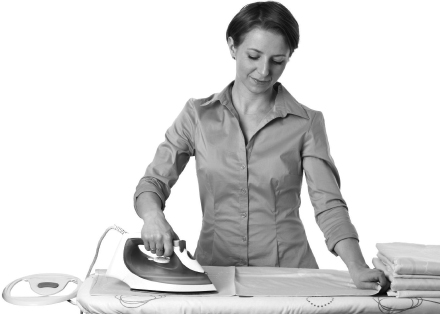
6: In contrast to the woman in photo 5, this person’s head is more balanced and therefore there is less strain on the rest of the body.
The Alexander Technique also involves examining and improving posture, breathing, balance and coordination, which are inseparable from one another. As children, our posture, while we are still or in movement, is a joy to watch, but as we start to tense our muscles in reaction to many of life’s worries and concerns, our posture deteriorates into what can eventually border on deformity. Anyone can see that most children have a better posture and move more gracefully than adults. Yet this is normally not the case with people outside the developed countries – many of the indigenous races who still live on the land, such as the Berber people from North Africa, the Native Americans from North America or the Aborigines in Australia, retain their natural posture throughout their lives.
Children do not ‘do’ anything to have good posture. It is all done for them by the brain’s automatic mechanisms and responses. They have a series of reflexes throughout the body that provide support and natural coordination of their movements without any conscious effort on their part. So do we adults – the only difference being that as adults we interfere with these natural reflexes, because many of us hold far more tension than is good for us. In fact, without realizing it, many of us make life much harder for ourselves than it really needs to be and this adversely affects posture. Our shoulders become permanently hunched, our necks become stiffer and stiffer, and we sit either slumped or holding ourselves in a very rigid fashion. As our minds become more and more concerned with the future and the past, and our awareness of the present moment diminishes, we start to lose awareness of how we stand, sit and move.
It is often hard for us to detect this increase in tension because it builds up gradually over the years. We become accustomed to the ways in which we sit and stand, and while these ways may feel comfortable to us, they are often putting strain upon our body without our realizing it. No matter how uncoordinated these positions become, they will feel right to us. In the end, poor posture, or as Alexander called it, ‘misuse’, will feel comfortable and ‘right’ and good posture (similar to the original natural posture we had as a young child) will initially feel strange and wrong. This is the effect of what Alexander termed ‘faulty sensory appreciation’.
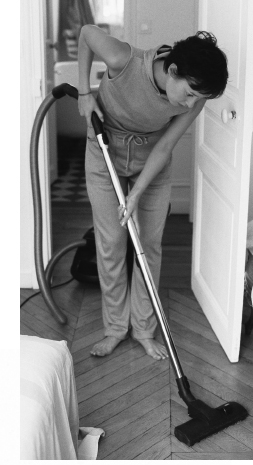
7: One of the reasons that many people suffer with back pain after vacuuming is that they bend their back instead of their knees. As a consequence, the lower back muscles are under considerable strain because they are supporting the entire weight of the upper body while it is bent forward.
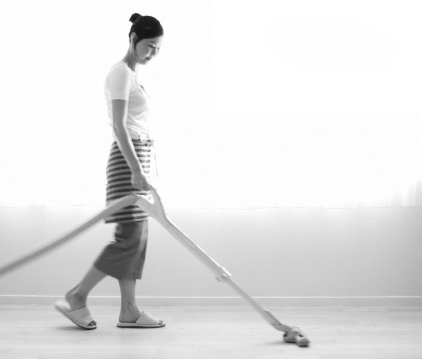
8: In comparison to the woman in photo 7, this person is doing the same task of vacuuming , but is much more upright, and as a result her muscles are not under the same stress.
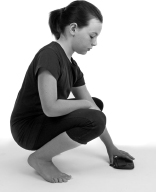
9: When bending down, young children naturally bend their hip, knee and ankle joints and keep there back align.
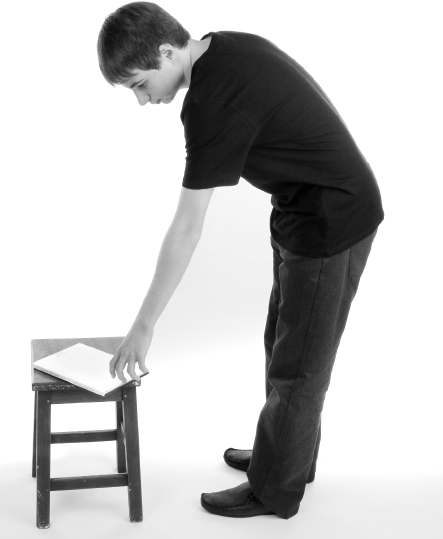
10: In contrast to the child in photo 9, adults in developed countries rarely bend their hip, knee and ankle joints, but bend their backs instead. This can result in a multitude of musculo-skeletal problems.
It may not be until years later that we start to suffer from aches and pains or restriction of movement, so, crucially, we often do not make the connection that our poor posture or misuse of ourselves is responsible for the pain. Contemporary methods of combating such problems typically involve powerful painkilling or anti-inflammatory drugs, or muscle relaxants, but these can block out the body’s warning system, whose function it is to tell us that something is wrong. Often, doctors can offer little advice because their training centres on treating symptoms rather than uncovering, and rectifying, the actual causes of such problems.
The Alexander Technique, however, does the opposite. It can show you the underlying causes, so that you are then able to eliminate the tension responsible for many of the ailments that are so often mistakenly put down to the ageing process. To illustrate this, consider the true story of a 55-year-old lady who came to me with a problem with her left leg. Her leg gave her a great deal of pain whenever she stood or walked on it. She had approached her doctor who sent her for tests and an X-ray. When the results came through, the doctor told the lady that she had arthritis, that this was caused by normal ‘wear and tear’, and that, as she was getting on in years, she needed to accept this problem. The lady refused to believe that the reason was simply wear and tear alone because, as she pointed out to her doctor, her right leg was perfectly all right and as far as she was aware both of her legs were exactly the same age! When she started having Alexander lessons, we quickly discovered that she had a habit of always standing on her left leg, and this was obviously putting excessive strain on it. Over the course of her lessons she became aware of what she was doing and made a conscious choice to change the way she used herself, and as a result she started to stand evenly on both feet. When she did this, the pain was immediately reduced, and within a few weeks she was walking and standing without any pain whatsoever.
One of the most common examples of how posture can affect our health is back pain. According to the UK-based charity BackCare, on average a third of people living in industrialized countries suffer from back pain at any given time, and a staggering 80 per cent of the population of these countries will have disabling back pain at some point in their lives. The Health and Safety Executive in the UK agrees that back pain will affect as many as four-fifths of people during their lifetime and results in 4.5 million working days lost each year. In the US, the National Center for Health Statistics reports very similar percentages. They say that over 76 million people in the US are suffering with backache at any given moment.
Statistics reveal that back pain is on the increase in most industrialized countries, yet there are no clear solutions to the problem in the established medical sciences. Although large sums of money are being spent on treatment of the pain, often with unpleasant side effects, there is little research into why back pain is so prevalent in industrialized countries, yet comparatively rare in developing countries. Doctors, back specialists and orthopaedic surgeons will often openly admit that the cause of back pain is frequently a mystery, and the same can be said for other ailments, such as arthritis, asthma or headaches. My father, who was a family doctor, used to say that if you want a day off work, you should just say you have back problems, because nobody can prove you have, and nobody can prove you haven’t, and even if you have, nobody can do anything about it. This was certainly true of my own back problem, and it was the reason I first became involved with the Alexander Technique.
I came to the Technique through back pain. This was primarily caused by poor posture due to my sedentary profession as a driving instructor. My posture was so hunched that a person once said that I looked like someone who had been living in a very small cottage with very low ceilings for a very long time! I often spent over 50 hours a week sitting in a car, and after several years at the job I developed lower back pain. At first it was an occasional aching back that was relieved by massage or some gentle exercise, but before long I was suffering with such a very painful condition that I could hardly walk. I did not know it at the time, but my search to try and get relief for my painful and debilitating condition would take me on an incredible journey of self-discovery.
The first port of call was my father, who was a medical doctor, and although he was obviously very concerned about my condition, he could offer me little help apart from painkillers and the usual (in those days) medical advice of rest. This brought only temporary relief, and as time went by even the powerful painkilling drugs I was taking became less and less effective. It was not long before I needed to get back to work due to financial pressures, but sitting in the car only made the problem worse.
I then attended several physiotherapists over a number of years, and although some of the treatments helped for a day or two, my condition got steadily worse and worse. Before long I was also suffering with sciatic pains that were shooting down my left leg, and I got to a stage where I could not sit, stand or walk without pain shooting through my whole body.
Eventually, after a long wait, I saw a series of back specialists who took X-rays and performed various other tests. Although a prolapsed disc was diagnosed as the cause of my problem, no one could tell me what had caused the disc to move out of position in the first place, or how I could get it back in place. I was only told that I would have to get used to the fact that I would never be able to live a normal life again and that I should avoid bending, lifting and carrying anything at all costs. The surgeon advised me to undergo surgery to remove the three lowest intervertebral discs, because this, I was promised, would reduce the level of pain. I initially agreed to this, but then my father persuaded me to cancel the operation because he was treating people who had undergone similar operations, many of whom were in even more pain than before, and very few were actually any better. So as a last desperate attempt to find some relief from the pain I underwent an intensive course of physiotherapy treatment as an inpatient at a large residential physiotherapy hospital near London, UK. One of the treatments at the hospital involved improving posture, and I was told ‘hold yourself straight’ and ‘pull your shoulders back’, but this only aggravated my pain instantly; in fact, it aggravated the problem of all the other patients in the session too. Although the physiotherapists were obviously doing their best to help, the treatment and exercises they gave were not helping me at all; in fact, when I was discharged from the hospital my back pain was worse than ever.
At this stage I started to investigate various forms of alternative medicine. These included the more established therapies, such as chiropractic, osteopathy, homeopathy and acupuncture, and then I tried less orthodox treatments, such as reflexology, metamorphic technique, aromatherapy, Reiki and spiritual healing. In fact, I was so desperate I would have tried practically anything, and while some of these treatments helped to some extent, I could still get only short-term relief, as the severe pain always returned within days of any treatment. I finally gave up after many years of searching and resigned myself to a life of pain. Up to this point no one, including myself, had considered why the discs had become prolapsed in the first place.
By chance one day I met an Alexander teacher by the name of Danny Reilly, who explained that the Alexander Technique could be very effective in helping back sufferers like myself who had tried many other remedies without success. Although I had no idea what it was, and was understandably very sceptical after all the other treatments I had received, I decided to have a couple of sessions to see what it was all about. At this point I was quite desperate as the pain was present day and night and so I felt that I had nothing to lose. I had no idea what ‘learning the Alexander Technique’ meant. As I had come across the Technique in the context of music and acting, being neither a musician nor an actor, I was not sure how it was going to help me.
During my first lesson, within minutes Danny asked me whether I always sat the way I was sitting. I replied that I really did not understand what he was talking about, so he put a mirror in front of me and I could see that I was twisting to the right while leaning at least 20 degrees to the left. Yet despite the fact that I was obviously sitting in a very crooked way, I felt perfectly straight. This was quite a revelation to me. I was amazed that I (or anyone else) had never noticed it before. Danny set about making a few gentle adjustments to the way I was sitting and two things happened: in my new position I felt completely twisted to the left and leaning way off to the right, yet at the same time my back pain started to ease. He showed me how I was now sitting in the mirror and to my amazement I saw with my own eyes that I was sitting perfectly straight.
After a few lessons, the changes felt less strange and my back pain slowly but surely started to abate. It was at this point that I realized that when I had been teaching people to drive, I had developed the habit of leaning to the left while twisting my pelvis to the right; this was so that I could see both the road ahead and check to make sure that the learner driver was looking in the mirrors at the same time. Over the years this had become my habit whenever I sat, and it was this very habit that had given me all my problems. As the tensions released more and more during a series of lessons, I also noticed that it was not only my back that was improving: I also started to sleep better, my self-esteem and confidence grew and, to my surprise, I was gradually becoming happier as well. Within three months I was leading a normal life again and was lifting and bending without any problem at all.
Many people carry on, as I did, for years with unnecessary pain, not realizing that anything can be done about it. We do, however, need to face up to the fact that we have to take responsibility for our ailments and not expect others to have all the answers. The Technique opens up a journey of personal discovery. Pain is simply the body’s warning system, trying to tell us that something is wrong. If heeded, it will urge us to consider our posture and the way we move our bodies while performing even the simplest of tasks. If you were driving a car and the oil light came on, you would not take out the bulb and carry on driving; this, of course, would be foolish. You would stop the car and endeavour to find what was wrong, and if you did not you could expect more serious problems later. Yet we are not encouraged to apply the same logic to the body. Many ways of treating back problems today are, in effect, attempts to eliminate pain without investigating what is causing it in the first place.
Since the physical postures we tend to adopt are actually a reflection of our inner state, many people find that when learning the Alexander Technique, they also become aware of, and can begin to change, the mental and emotional habits that have been present for most of their lives. When learning the technique you will begin to recognize behaviour patterns that are no longer serving you and this will help you to gain a new self-awareness and freedom of choice. This naturally leads to a greater inner harmony that will be reflected in your posture. So when applying the Alexander Technique as a daily practice, you will be able to make conscious choices not only in the physical sense but also on many levels, allowing you to have more freedom in every aspect of your life.
Because it is often extremely difficult to see your own habits and areas of tension, finding a teacher is very important to help you through the difficulties that will often arise during the learning process. Although, of course, Alexander himself did solve his own problems without any help from others, he did take a great deal of time and a lot of determination to do so, and he was a pioneer in the field. Most of us today would not choose to spend all that time identifying our harmful habits without the help and guidance of a trained Alexander Technique teacher.
In this book you will learn about the principles and the philosophy behind the Alexander Technique, but it is not a substitute for actual lessons from a qualified teacher: after all, you would not expect to drive a car after only reading a teach-yourself-to-drive book. Having studied the principles of the Technique explained in this book, however, you will be able to understand more easily and quickly what your teacher is trying to convey, saving you both time and money. A good understanding of the principles will also help you to take responsibility for your learning process.
Learning the Alexander Technique consists of four stages:
1. Becoming aware of all postural habits that cause or exacerbate a lack of coordination and a general misuse of yourself.
2. Releasing the unwanted tension accumulated over many years of standing, moving or sitting in an uncoordinated manner.
3. Learning new ways of moving, standing or sitting that are easier and more efficient and that put less stress on the body, thus reducing excessive wear and tear on the bones and joints as well as allowing all the internal organs space to function naturally.
4. Learning new ways of reacting physically, emotionally and mentally to various situations.
11: During an Alexander lesson, you will be taught how to be aware of undesirable and unwanted muscular habits and then you will be shown new and less stressful ways of performing a variety of activities.
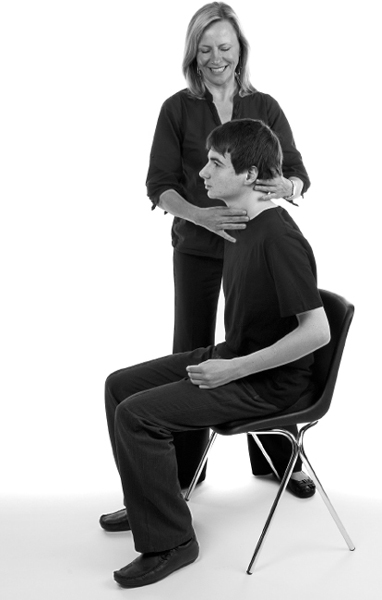
12: The freedom of the neck is of primary importance, for without it the head cannot balance freely on top of the spine, which is essential for good posture One of the first things an Alexander teacher usually shows you is how to release the tension in the neck.
You are never too old to learn the Technique! As previously outlined, I have taught people well into their eighties who have made remarkable progress. However, of course the younger you are, the fewer habits you will have accumulated and therefore it is likely that you will be able to change the harmful habits more quickly.
An Alexander Technique lesson typically lasts between 30 and 60 minutes. During this time your teacher will gently move you to see if he or she can detect places where you may be holding muscular tension. The process is very gentle and painless. When tension is discovered, your teacher will ask you to notice and, if you can, to let go of it, and you may be amazed at the difference in how you feel after only a few lessons.
The key to learning the Technique is awareness. It may seem a little odd at first to make an effort to become aware of how we perform various tasks, because many of our movements have become automatic and we tend to perform them over and over again in the same way without conscious thought. Gradually, though, we learn to think briefly before performing any given action to see if it can be carried out with much less tension.
Once this awareness is achieved, very often we will realize how we have been causing our muscles to over-tense needlessly every time we move. By analysing even simple movements, such as walking or getting up from a chair, we can find new ways of moving that releases muscular tension rather than creating it. People who have undergone a course of lessons often experience less tiredness and have more energy to do the things they enjoy. Their quality of life is greatly enhanced, and feelings of calm, happiness and greater wellbeing begin to replace feelings of exhaustion or anxiety.
When you begin to apply the principles of the Technique, you will not be learning anything new, but simply unlearning the bad habits you have acquired during the course of your life. Alexander often said that if you stopped doing the wrong thing (i.e. the habit), the right thing would happen by itself, and this principle is at the very heart of the Technique. It is, however, sometimes harder to relearn it than it is to learn something in the first place, because our usual way of performing actions always feels so right to us. As we start to allow tension to release, we find that we are naturally using ourselves in a much more balanced and coordinated way without any effort.
It is important to realize that the whole process of re-evaluating the way in which we stand, sit and move does take time, as we are dealing with habits that have probably been present since childhood. These days we have come to expect immediate results, and yet nature is not like that: it will take time for posture to change. We even have habits in the way we think, and in the process of learning the Alexander Technique we begin to be aware of how our minds sometimes get in the way of this change. As part of the process, we begin to catch the harmful habits of both body and mind, so change can be profound and multifaceted.
We have all developed physical, mental and emotional patterns of behaviour that we take for granted, and it is often easier for others to see these when we ourselves cannot. We react to a given situation over and over again in a set way, irrespective of whether it is appropriate. We make certain assumptions, and these influence our choices and reactions, yet in many cases we are unaware that we are doing this. As a result, we repeat them time after time. Many of these ways of responding were learnt in childhood, some even before our earliest memory, so they obviously feel totally normal to us. Bringing these habits to consciousness with the help of the Technique can help us become freer, happier and more conscious human beings.
“I find the Alexander Technique very helpful in my work. Things happen without you trying. They get to be light and relaxed. You must get an Alexander teacher to show it to you.”
John Cleese, comedian and actor
The Alexander Technique is:
• A way of becoming aware and letting go of tension throughout your body.
• A re-education, so that you learn how to use your body in a more appropriate way, and thus avoid putting stress on the bones, joints and internal organs.
• A process in which you will get to know yourself better.
• A way of making real choices in your life, rather than reacting habitually and unconsciously to any given situation.
• A way of understanding how you are naturally designed to work, and how to stop interfering with your body’s natural functions.
• A technique that you will immediately be able to use in daily life to bring about greater harmony and contentment.